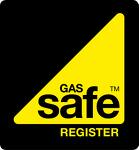|
|
|
01243 841464
|
Water SoftenersOne of the main areas of concern within the water conditioning market is with reference to the installation of water softeners. Unfortunately, there is predominantly little or no reference, given to this subject, which obviously creates a great void for the installer. Introducing the subject in a simple and effective manner will ensure that we can gain the necessary educational programme. ScaleWe already know that 1.6mm of scale build up in heating systems will cause a 12% loss in heating efficiency (British Water) and that 65% of the UK is situated in a hard water area. Over the years, scale forms around heating coils, which means boilers, will run longer and hotter, wasting more energy. Scale fills the hot water cylinder, severely reducing its capacity to store hot water, and will also reduce the life of showers, washing machines, water heaters, and immersion heaters, increase maintenance and repair charges along the way. Hard water itself will increase the amount of soap, shampoos and detergents required to produce lather and overall savings for an average four-person household should be in the region of £200 per year (British Water). Simple technologyWater softeners work by a process known as ion exchange. The incoming water passes through a high quality resin inside a vessel chamber. The resin traps the calcium ions, or lime scale, from solution and exchanges them for ions of sodium, or salt. When the resin becomes exhausted, it is put through a cycle called regeneration by drawing a solution of salt and water to simply cleanse the system. During regeneration the calcium ions are then released from the resin and exchanged again with those of sodium. The unwanted calcium ions are then flushed to drain. This regeneration process can take between 30 minutes and 2 hours depending on the softener and can be repeated as often as necessary. Note should be taken that in general terms, all softeners should have the capability to use tablet, granular or block salt, but it is common practice to contact the manufacturer for their recommendations. The amount of salt and water used is also dependent on the particular softener and great care should be taken to determine efficiency levels of the usage of water and salt, as first glances at information can often be misleading. Together with this there has been a lot of discussion as to whether a softener is metered or timed, and which is more efficient. As a general rule, metered softeners actually measure the amount of water that goes through the system, similar to a flow meter, and therefore will regenerate at different times dependent on usage. Timed softeners, on the other hand, will regenerate on a given day regardless of the amount of water used. Within commercial applications this can be beneficial, but within most domestic situations this has not been found to be the case, due to the size of the resin vessel. In any case it is always seen to be best practice not to have standing water for a long period of time due to potential bacterial growth and therefore a short regeneration each day may be more beneficial. Checks should be made with the manufacturer on the time each softener uses for the regeneration cycle, which will determine the water and salt usage. Over a similar period it has been found that the timed versions will only use similar amounts of water and salt as the metered versions, due to the regeneration time, therefore not showing the benefits first thought. Of course, what the customer ultimately requires is soft water. If you can give them this with little or no maintenance and setting-up then you will succeed. All softeners operate automatically and require the addition of salt at regular intervals. DesignDesign considerations can also be applied simply by gathering basic information. Softeners ideally should be fitted near to the incoming mains water supply with access to a drain and electricity. All devices will also lose an amount of pressure when installed, which will be in the region of 0.5 bar and 1.0 bar, and can be installed on high flow applications and direct feed applications. The main consideration for sizing softeners is to compare the capacity to the main boiler it is supplying and on high flow applications that a 22mm installation kit is installed. This will ensure that you do not undersize or oversize. Under sizing can lead to water passing over the resin too quickly and therefore not producing 100% soft water and over sizing can lead to the incoming water channelling through the resin, again not producing 100% soft water. It is true to say that although this is not a major problem domestically it can have repercussions in commercial applications. If the boiler has been specified correctly then the softener can be sized accordingly. If this information is not at hand then the following checks should be applied: 1. Check the pipe size where the softener is to be installed. 2. Check the hardness of the water with a water hardness test kit. 3. Check the incoming mains pressure. If the incoming pressure is below 1 bar then the softener may not function and if it is over 5 bar then a pressure reducing valve should be fitted. 4. Check for any potential heat transfer that may damage the valve of the softener. 5. Check maximum flow rate. 6. Check the size of the property and number of occupants. Figures can be based on a person using 150 litres of water per day. 7. Check the location of the installation to ensure that salt can be stored and filled and that the unit is accessible for any servicing that may be required. If the above information is gathered then the correct softener can be applied ensuring that any potential sizing problems are eliminated. Softeners begin to produce softened water immediately, but if the plumbing system is one that has a cold-water storage tank then it may take four or five days to empty the tank before 100% softened water is coming through the system. During these four or five days what will be seen is the water getting softer as soft water is mixed with hard water. Central heating systems are not normally affected by the use of softened water and any chemicals that are used to keep the system in a healthy state should be continued. Once a suitable position has been found, all necessary fittings, which are usually supplied by the manufacturer, should be installed. These will include an inlet and non-return valve to be installed on the incoming main, an outlet on the softener outlet side and a bypass valve, which should be fitted as standard to override the softener at any time. Care must be taken to install the valves with the flow directions in line with the water flow. Health issues A separate drinking water, non-softened supply may be required to be installed which is usually fed to the kitchen. The latest papers suggest that reducing salt intake may actually be dangerous, as the mortality rate from coronary disease amongst those who also follow a reduced salt diet appears to be four times higher than those who use drug treatment alone. Sodium is contained in much of our everyday diet such as milk, bread, bacon and baked beans, with up to 85% of the daily average consumption coming from processed foods. The sodium level in a glass of softened water is only a fifth of that in a glass of semi-skimmed milk, and a can of soup contains over 20 times more sodium than softened water. Also, as a health issue, many eczema sufferers have reported that a move to softened water has substantially reduced inflammation. Softened water is also known to have a calming, soothing effect on other skin problems including psoriasis and recent research has identified a strong link between hard water and childhood eczema. |
|

|




